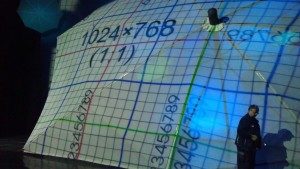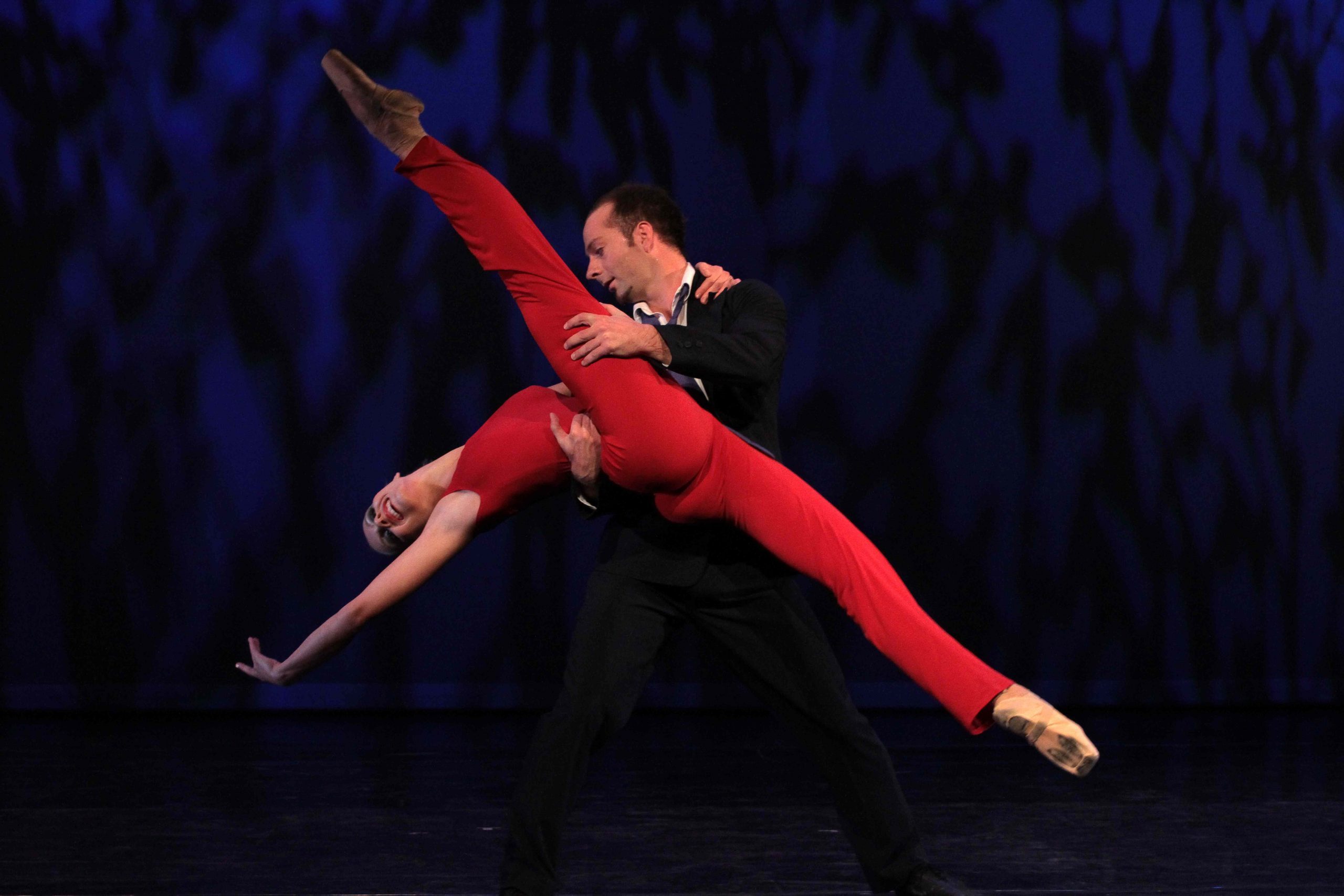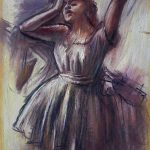A performance is born
Pátkai Balázs and Sebestyén Bálint in “Dans la port Amsterdam” from Ben Van Cauwenbergh’s piece “La Vie En Rose”, to premiere with the Győri National Ballet this saturday. Photo by Jekli Zoltán ©
This saturday, the Győri Ballet company is presenting the performance “La Vie En Rose”, choreographed by Ben van Cauwenbergh, for the first time. Which means the dancers are working day and night this week, grinding the last steps down to a best possible result – the performance.
But what is else happens in the theatre the last week before a premiere?
Let’s have a look at some of the work that lies behind the what’s presented on the premiere-night, besides the steps themselves;

Dimitrij Simkin, former great dancer and father of the famous Daniil, is the designer of the scenery and lights on La Vie En Rose.
Technical adjustments.
By the last week before a show, all the props and scenery are (hopefully) all at place, but there is still lots of adjustments to be done. A theaters stage is usually a busy place, and there is seldom room in the performance-schedules to practice a new show on stage, with all the props, scenery and costumes on place, before the last period. Now, let me assure you something: Nothing works as it was thought to. That is a fact of life. That umbrella that was supposed to open, doesn’t. Or it does, and pops out the eye of any poor dancer nearby. And that bench is in the way. And that dress looks dreadful in the light set on stage. And that picture is too low. And… There is always a million things to adjust for the stage to work, look and feel the best on the grand opening.
.

The technicians are adjusting a projector used in the performance. To me, it looks like third grade math! ![]()
Clothing
Costumes are complicated stuff in the dance-business. They are supposed to look a certain way, to reflect a certain period or create some sort of frame for the performance. But they should also fit the dancer, without restraining the movement or revealing something it shouldn’t, be that an un-stretched knee, a prop or worse, parts of the body one doesn’t usually show off in front of an audience. In the last week before a performance, the flaws and changes of the costumes becomes clear as well, and there is a lot of adjustments that has to be made. And then there’s the prima-donna issue. Just ask The Adult Beginner – dancers love to complain about the fit of their costumes. And usually, they are wrong. Yes, the waist is supposed to be that tall. No, we can’t make it lower for you because you usually buy your jeans like that. Deal with it.
.
Mariya Mizinskaya anb Bede-Fazekas Csaba is Edith Piaf and ‘Jef’. Photo by Jekli Zoltán ©
Lightning
The hazy, dark fog that was planned for a scene might look awesome when designing the lights. But dancers running into each others because they can’t see anything suddenly makes the scene a lot less awesome. As with the scenery, and the costumes, the light-technicians has a lot to do in the last period before a show. And what we often don’t realize is how much work is behind a small change in the lights on stage. The choreographer tells the technician he needs more light in that corner back there. And then expects the technician to turn a knob, and there will be light. But the truth is more often than not, the tech-guy has to run up to the seventh floor, and move a spotlight from one rod to another. And make room for it there. And change the run-sheets for the latter numbers because of the change. And re-calibrate the spot. And… The rehearsals setting the lights are often the longest ones of all before a premiere.
Check out my (somewhat ironic) post on “characters in the ballet theatre” for some background info on some of the people mentioned in this post
.
Music
Oh, the music. Depending on if you are dancing with an orchestra or with recorded music, there are different things that needs to be adjusted, but there is always something. The conductor is making the orchestra play too fast, too slow, too loud and with the wrong punctuations, all at once. At least if you ask the dancers performing their jumps and turns. And like Mike commented in my post on the characters in the theatre, the sound-technician is deaf. And the light technician is blind. And the music starts before the dancers are on stage. Or it doesn’t start at all. I think you can all imagine the issues here.
.

Szendrei Georgina and Sebestyén Bálint in ‘Natalie’. Photo by Jekli Zoltán ©
All these things are important factors to a successful show, and stuff the audience don’t necessarily know about. Everytime a dancer goes on stage, there are hours of work behind it, not only by the dancer, but by a lot of others, too. And I haven’t even started talking about those who promote, administrate and plan the performances – another large, and by the average audience, forgotten group.




